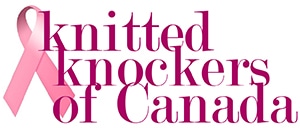Short Rows – knitters either love them, hate them, or are so daunted by them that they never try them at all. I’m one of those knitters who loves short rows. In fact, I seek out patterns that incorporate short rows into the design because I love them that much. Over the course of the next few posts, I will walk you through a series of different short rows in an effort to help you see how easy they are and just what they can add to your knitting.
Short rows are just that, a short, or partial, row of knitting that is used to add shape, dimension, or curves to sections of knitting. You may not realize it but if you’ve turned a heel, then you have worked short rows! The three-dimensional heel pocket you create by working part way across a row and then turning to work in the other direction is the most basic example of short row shaping. Check out our Basic Sock Pattern to get an idea of heel shaping.

Short rows don’t just create three-dimensional pieces they also allow you to add extra rows across a section of knitting to lengthen the fabric within that section, thereby creating a wedge like you see in our Painted Crescent Shawl Pattern.

Not only do short rows add a little interest to patterns they can add a lot to the finished garment as well. Shaping shoulders using short rows is a wonderful way to compensate for the natural slope of shoulders and eliminates the jagged edges that occur when you bind off over several rows. Short rows can be used to create bust darts, sleeve caps and asymmetrical hems as well.
Let’s start with the Wrap & Turn method of short row shaping, abbreviated in patterns as w&t. One of the most straightforward methods of short row shaping, w&t works well in both garter and stocking stitch, is easy to identify, and the wraps are easy to resolve. For this sample I’m using Cascade 220 Heathers, colour 9455 – Turquoise Heather and 4.5mm (US7) needles. I’ve cast on thirty stitches and worked twenty rows in stocking stitch. Grab your needles and work along with me, you’ll be amazed at how easy it is!



You can see that the stitch on the right-hand needle has been wrapped and the yarn is in position to purl.



When working in garter stitch the wraps are not visible but in stocking stitch, as in the photo above, you can clearly see the wrap around the stitch on the right-hand needle. In order to avoid getting a hole at the turning point and to maintain a smooth fabric we need to resolve the wraps with the wrapped stitch.
You’ve now successfully knit short rows using the wrap and turn technique and I’ll bet it wasn’t as scary as you had thought. Join me next month for German Short Rows – you’re going to love them!












Great file thanks for sharing